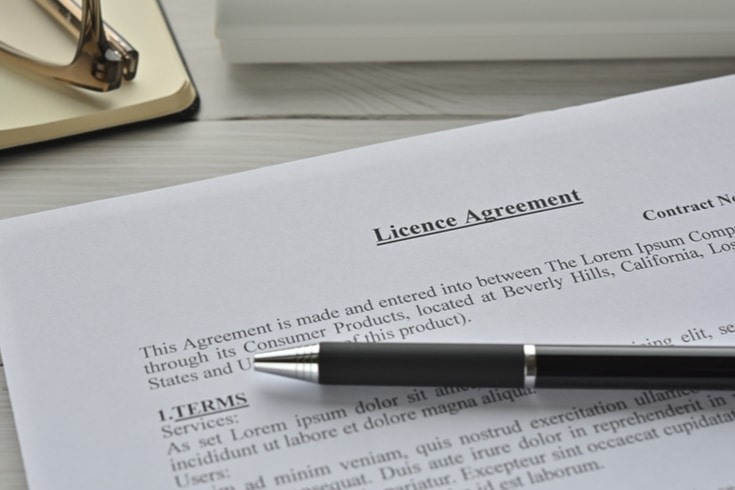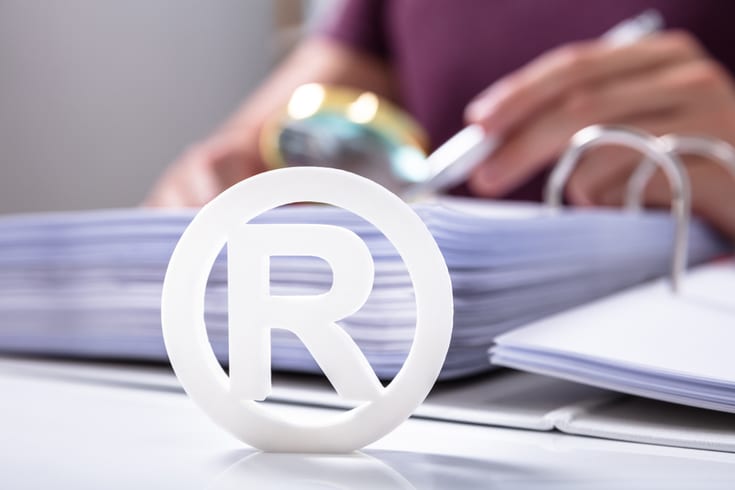Key Points to Check in Trademark Licensing Agreements in Brand Licensing

One scenario where a trademark license becomes necessary is when the name you’ve conceived for a new brand is already registered by another company.
While it’s simple to think of a trademark license in this case as merely ‘borrowing a name’, the story changes when it becomes the name of a brand.
A brand’s trademark is not just a string of personalitys or a design, but a ‘proof of legitimacy of the brand’s product’. Therefore, consumers are willing to purchase products bearing that trademark at a higher price than similar products.
As such, when licensing a brand’s trademark, the brand must demand the licensee to manufacture products suitable for the brand and display the trademark appropriately.
In this article, we will explain the key points that the licensor, the brand side, must know in a ‘trademark license agreement’ in brand licensing, which is different from a general trademark license.
What is a Brand?
The American Marketing Association, a leading authority in the brand business, defines a ‘brand’ as follows:
A brand is a ‘name’, ‘term’, ‘symbol’, ‘design’, or other feature that identifies one seller’s goods or services as distinct from those of other sellers.
In other words, a brand is an entity that can add distinguishing features (added value) to its products or services, differentiating them from similar products or services. These distinguishing factors can range from tangible aspects such as function and shape, to intangible aspects such as history, image, and trustworthiness. It can be considered that a brand’s trademark has the following three functions:
- Product Identification Function: Distinguishing the trademarked product from other products
- Quality Assurance Function: Guaranteeing the quality of the trademarked product
- Customer Attraction Function: Guiding the brand’s customers to the trademarked product
Such economically valuable trademarks can obtain trademark rights (exclusive rights) by registering with the Patent Office, making it possible to grant usage licenses to third parties.

Trademark Licensing in Brand Licensing
In industries such as fashion, brand licensing is not particularly uncommon. It can take various forms, such as sub-brands of the original brand or for the purpose of local production and sales in other countries.
For the brand side, not only does it provide royalty income, but it also offers benefits such as business expansion and the development of new markets. For the licensee, they can expect to develop a highly profitable business by leveraging the brand’s reputation, credibility, and image.
While brand licensing is generally thought to center around the use of the ‘brand name’ or ‘logo’, in reality, there are cases where the contract strictly regulates the details of product design, manufacturing, and sales.
From the brand’s perspective, it is only natural to ensure that the valuable brand image and credibility, nurtured with time and money, are not damaged.
In this way, the role differs between a trademark license contract aimed at simply using the trademark, and a trademark license contract in brand licensing.
Key Points to Check in Trademark Licensing Agreements
In this section, we will focus on the key points specific to trademark licensing agreements for brands.
Scope of License
Article ●●
1. Party A grants Party B the right to use the licensed trademark within the scope defined in the following items:
① Licensed territory: ●●●●
② Licensed products: ●●●●
③ License period: From ●●●● (year) ●● (month) ●● (day) to ●●●● (year) ●● (month) ●● (day)
2. Party B does not have any rights to use the licensed trademark beyond the scope defined in the preceding paragraph.
3. Party A and Party B shall cooperate with each other to apply for the registration of the right to use as defined in paragraph 1 within ●● days after the conclusion of this agreement. The cost of such registration shall be borne by Party B.
※Licensor: Party A, Licensee: Party B
The most important points when licensing the trademark of your own brand are the “type of usage rights” and the “scope of the license”.
For example, if you grant an “exclusive right to use” in the “sports field”, you cannot license the trademark for tennis equipment or golf equipment, even if there is a request from a third party.
Furthermore, even if the licensed products are “golf equipment”, it is possible to further subdivide them into “golf balls”, “golf clubs”, “golf wear”, etc.
Therefore, for the brand side, it is risky to decide the scope of the license without careful consideration, as it is difficult to predict how the brand business will develop in the future.
There are two types of usage rights, “ordinary usage rights” and “exclusive usage rights”. In the case of “exclusive usage rights”, once registered, even the brand owner cannot use the trademark within the scope of the license. Therefore, unless there are significant benefits, it is better not to choose this option. It is also possible to grant an “exclusive ordinary usage right” that is agreed upon as exclusive between the parties.
Therefore, it is important to determine the scope of the license based on the licensee’s capabilities and business plan.
Unlike the exclusive right to use, which requires registration, the ordinary right to use does not require registration, but by registering, you can assert your rights against third parties who acquire trademark rights later.
Use of the Licensed Trademark
Article ●●
1. Party B, in using the licensed trademark, recognizes that the licensed trademark represents the credit and quality of Party A’s products and shall strive not to damage the brand value of Party A.
2. Party B shall use the licensed trademark in accordance with the display form and usage method specified in Appendix 1 and the instructions given by Party A from time to time.
3. Party B, in using the licensed trademark, must clearly indicate that the manufacturer of the licensed product is Party B.
4. Party B shall not re-license the licensed trademark to a third party, transfer it, provide it as security, or perform any other disposition without the prior written consent of Party A.
5. If Party B ceases or terminates the use of the licensed trademark, it shall promptly notify Party A in writing.
In “Appendix 1” of paragraph 2, in addition to the display form of the licensed trademark, such as the position, size, and color of the display, and the combination with the brand name and logo, it is also possible to add an obligation to include a statement such as “The licensed trademark is a registered trademark of (Licensor), and (Licensee) is using it on this product with permission.” in promotional materials and product tags.
In addition to the provisions of the sample clause above, it is also possible to add prohibitions for the purpose of preventing damage to the brand value, such as the following.
Party B shall not engage in any of the following acts, regardless of whether they are within or outside the licensed territory.
① Use or register a trademark or other mark that is similar to or likely to be confused with the licensed trademark.
② Cause the licensed trademark to lose its distinctiveness or damage its credibility.
③ Use the licensed trademark in a manner that could mislead the quality of the licensed product
However, be careful when imposing obligations on the licensee, such as prohibiting the manufacture and sale of competing products, as this may be problematic under antitrust laws.
Quality Certification of Licensed Products
Article ●●
1. The licensed products on which Party B can display the licensed trademark must conform to the quality standards specified in Appendix 2.
2. Party B can use the licensed trademark only on licensed products that Party A has certified as conforming to the specified quality standards.
3. In order to receive the certification from Party A as provided in the preceding paragraph, Party B shall provide Party A with a sample of the licensed product with the licensed trademark, and Party A shall notify Party B in writing of the acceptance or rejection of the certification within ●● days after receiving the sample.
Quality check of the licensed products is an important process, as the credibility of the brand may be damaged if the quality of the products with the licensed trademark does not meet a certain standard.
In addition to quality, factors such as “design”, “price range”, “target”, and “advertising and promotion” can also have a negative impact on the original brand, so it is worth considering adding these as “certification conditions”.

Essential Clauses to Mitigate the Risks of the Licensor
Disclaimer
Article ●●
Party A does not guarantee the validity of the trademark rights related to the licensed trademark, nor that the use of the licensed trademark does not infringe on the rights of third parties.
Just like in a patent licensing agreement, it is virtually impossible to check all similar registered trademarks, and it is impossible to judge about rights infringement without a lawsuit. Therefore, it is a significant risk for the licensor to make such a guarantee.
If you want to know more about trademark infringement, please see the detailed article below in conjunction with this article.
https://monolith.law/corporate/penalty-for-trademark-infringement[ja]
Exemption
Article ●●
Party A shall not be liable for any damages incurred by Party B due to defects in the licensed products and the use of the licensed trademark.
Even if the brand side has certified the quality, the responsibility for defects in the licensed products lies with the licensee. Also, by displaying the brand name and logo, the brand side may be held liable for “product liability” of the licensed products. Therefore, this clause is considered essential.

Summary
In this article, we have explained the key points that brand owners need to know in trademark licensing agreements for brand licensing, which are different from general trademark licensing agreements.
In actual contracts, in addition to the above, clauses such as ‘trademark usage fees’, ‘termination’, ‘confidentiality obligations’, ‘measures after contract termination’, ‘damages’, ‘governing law’, and ‘jurisdiction’ are required.
We recommend consulting with a lawyer who has specialized knowledge and extensive experience in advance, as brand trademark licensing requires knowledge of brand business and should not be decided independently.
If you want to know about licensing agreements in total, not only trademark rights but also copyrights and patent rights, please see the detailed article below in conjunction with this article.
https://monolith.law/corporate/license-contract-point[ja]
Introduction to Our Firm’s Measures
Monolith Law Office is a legal office with high expertise in both IT, particularly the internet, and law. In recent years, intellectual property rights surrounding copyrights have been attracting attention, and the need for legal checks is increasingly growing. Our firm provides solutions related to intellectual property. Details are described in the article below.





















